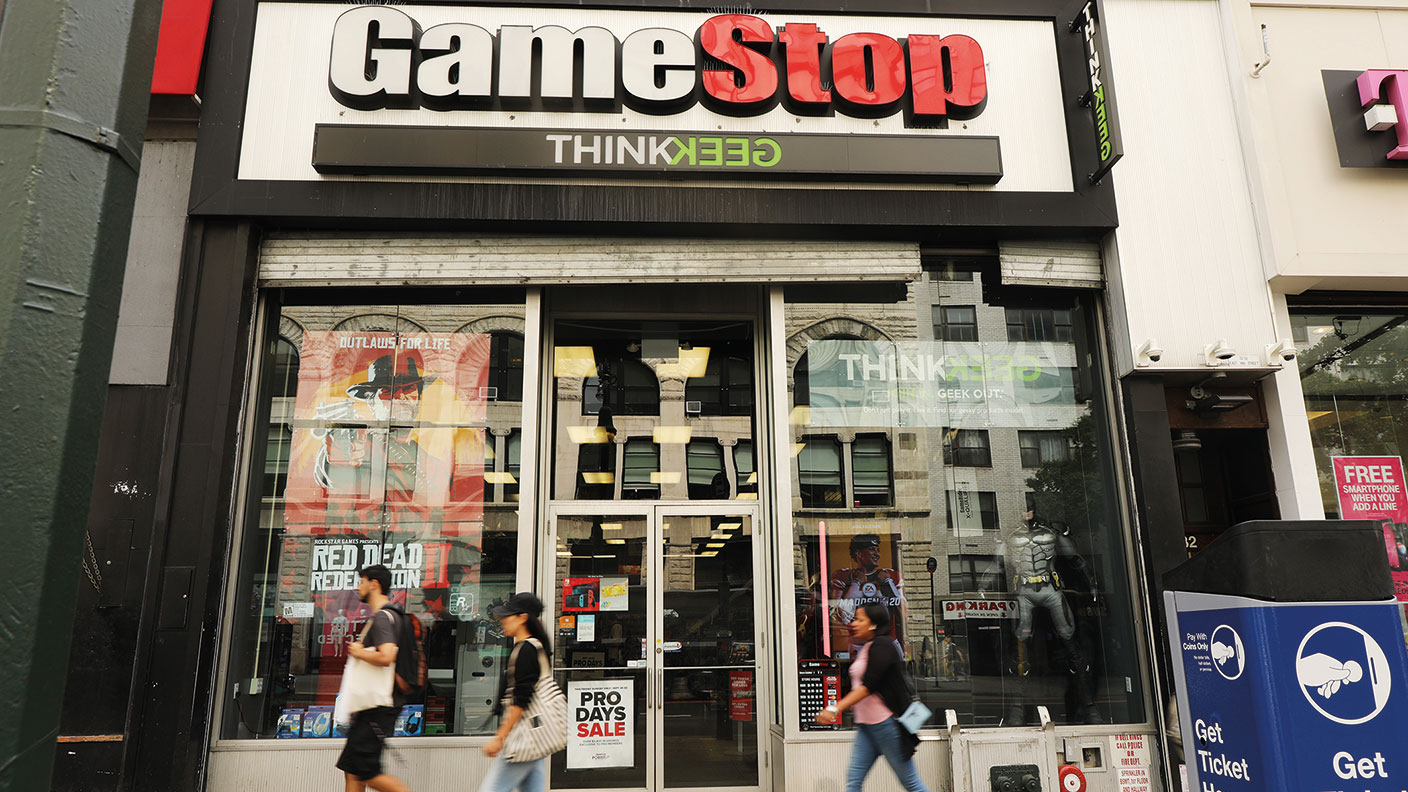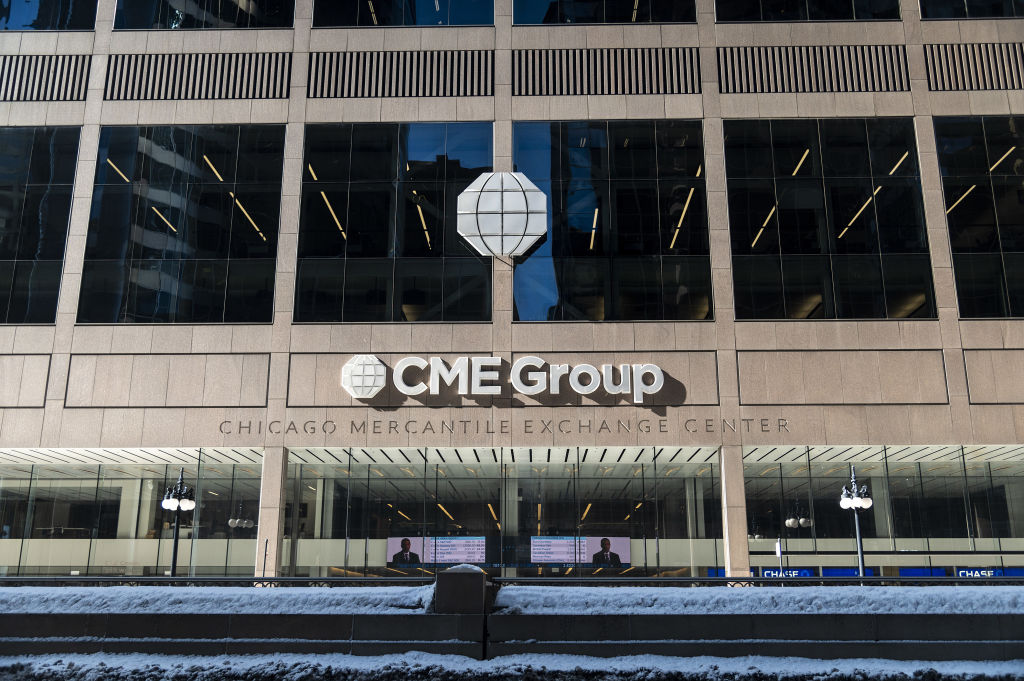Game over at GameStop – should you join the short sellers?
It’s no wonder short-sellers have targeted ailing video-game retailer GameStop, says Matthew Partridge. Perhaps you should too. Here’s how to play it.


The surge in US technology shares has prompted many analysts to draw parallels with the technology bubble of 1998-2000. While many of today’s hot tech stocks are at least making money, which most dotcoms weren’t, there are several similarities between the two booms.
At the height of the dotcom era, for instance, many people were quitting their day jobs to trade the stockmarket full-time as day traders. Today, the rise of commission-free trading apps, most notably Robinhood, has enticed many ordinary investors into the market, causing shares in certain firms to go haywire. One big winner has been video-game retailer GameStop (NYSE: GME).
Not long ago, GameStop’s shares seemed to be in terminal decline. They had gradually slipped by 95% from their price of around $40 in 2015 to a low of $2.57 last March. In August they were around $4 a share. However, since then they have taken off, reaching $20 by the end of the year.
MoneyWeek
Subscribe to MoneyWeek today and get your first six magazine issues absolutely FREE

Sign up to Money Morning
Don't miss the latest investment and personal finances news, market analysis, plus money-saving tips with our free twice-daily newsletter
Don't miss the latest investment and personal finances news, market analysis, plus money-saving tips with our free twice-daily newsletter
This attracted many prominent short-sellers to start betting against GameStop. However, instead of falling back, GameStop’s shares have surged, with many ordinary investors doubling down on their original bets and driving the price as high as $101 at one stage (though it was $88 at time of writing).
Squeezing the stock higher
One reason behind this surge is the hope that the short-sellers will be “squeezed”. Because short-sellers are effectively betting on the price of a share falling, any increase in price will cost them money.
A short squeeze occurs when the share price rises so much that the losses become unbearable, causing short-sellers to throw in the towel and start covering their positions. Because covering involves buying back the shares that they have borrowed in order to sell, a squeeze should (in theory at least) drive the prices of GameStop’s shares even higher. It’s an alluring idea, but short squeezes rarely work for long and even when they do, they are usually followed by a dramatic fall as the shares’ supply and demand dynamics return to normal.
GameStop’s fundamentals are also very weak. Since it makes almost all of its money from selling physical copies of computer games in its 5,500 stores, its business has been eroded by the shift towards online sales, not only through Amazon but also owing to downloads of video games from the internet.
As a result, sales have declined from $9.3bn in 2016 to $6.4bn in 2020 – and are expected to go on falling to around $5.8bn in 2022. The company has also lost money since 2019. Note too that even if profitability were somehow to rise to 2018 levels, the stock would be trading at over 30 times earnings.
I therefore recommend that you short GameStop. However, given the chance that the attempted short squeeze could lead to further price rises in the short run, I would take the precaution of waiting until the price had fallen below $50 before pulling the trigger. In that case, I’d short it at £40 per $1, covering the position if it rises above $75. This would give you a total downside of £1,000.
Trading techniques... graduates from Aim
The Alternative Investment Market (Aim) was established in 1995 to make it easier for small companies to raise capital by floating on the stockmarket. The criteria companies need to fulfil before they list on Aim are less stringent than on the main market of the London Stock Exchange. Many people thought that Aim would also play a role as a “nursery” for smaller companies, with many becoming big and established enough to graduate to the main market. Indeed, between 2008 and the start of 2019, 65 companies moved from Aim to the main market, while 56 moved in the opposite direction.
In theory, moving from a smaller market (such as Aim) to a bigger one should boost a company’s share price, while a move in the opposite direction should bode ill. Firstly, since many investors will avoid Aim because it is seen as a risky market, moving to the main market should boost a share’s liquidity, making it easier for investors to buy and sell without moving the price. Moreover, because the regulatory requirements for the main market are more onerous, a move to the less tightly regulated Aim could be a sign of trouble that the firm’s management wants to hide.
However, a 2008 study by Oxford’s Tim Jenkinson and Tarun Ramadorai found that this was only half right. Between 1996 and 2006, the share price of firms shifting from Aim to the main exchange typically rose by an average of 6% after the switch was announced, while the stocks of those moving in the opposite direction fell by an average of 4%. But while the performance of the upward movers was neutral (compared with the market as a whole) in the year after they started trading on the main market, the downward switchers actually outperformed Aim by an average of 20%.
How my tips have fared
It has not been an encouraging fortnight for my long tips, with four out of five falling. Media group ITV declined from 110p to 102p and building company Bellway fell from 2,970p to 2,803p. Transport group National Express slipped from 258p to 244p. Cruise-ship company Norwegian Cruise Lines also dipped from $24.14 to $23.97. The only pick to buck the trend was pub group Mitchells & Butlers, which climbed from 238p to 277p. My long tips are now making a total net profit of £4,583, compared with £4,936 two weeks ago.
Most of my short tips went against me too, with five out of six appreciating. Online insurance broker eHealth went up from $70.98 to $82.97, electric-truck company Nikola advanced from $17.08 to $20.74, online furniture store Wayfair increased from $259 to $294 and online grocer Ocado rose from 2,478p to 2,800p. Food delivery firm DoorDash also gained – from $173 to $191.
The only exception was social network Twitter, which remained steady at $48. Overall, my short tips are making a total net profit of £1,490, compared with £2,066 two weeks previously.
I now have five long tips and seven short tips, which means that the portfolio is slightly biased toward short positions. All my five long tips are making money, so I’m not going to touch them, although I will increase the stop-losses on National Express to 200p (from 190p), Mitchells & Butlers to 220p (from 190p) and ITV to 80p (from 75p).
However, since Wayfair is losing money after nearly six months, I’m considering ditching it if things don’t improve. I’m also cutting the price at which you should cover your position in eHealth to $95 (from $100) and Nikola to $30.
Get the latest financial news, insights and expert analysis from our award-winning MoneyWeek team, to help you understand what really matters when it comes to your finances.

-
 Household savings ratio drops – are you setting enough aside for 2026?
Household savings ratio drops – are you setting enough aside for 2026?High inflation has pushed the savings ratio down again and the figure could dip further next year
-
 US stocks: opt for resilience, growth and value
US stocks: opt for resilience, growth and valueOpinion Julian Wheeler, partner and US equity specialist, Shard Capital, highlights three US stocks where he would put his money
-
 Coreweave is on borrowed time
Coreweave is on borrowed timeAI infrastructure firm Coreweave is heading for trouble and is absurdly pricey, says Matthew Partridge
-
 Circle sets a new gold standard for cryptocurrencies
Circle sets a new gold standard for cryptocurrenciesCryptocurrencies have existed in a kind of financial Wild West. No longer – they are entering the mainstream, and US-listed Circle is ideally placed to benefit
-
 Profit from other investors’ trades with CME Group
Profit from other investors’ trades with CME GroupCME Group is one of the world’s largest exchanges, which gives it a significant competitive advantage
-
 Investors need to get ready for an age of uncertainty and upheaval
Investors need to get ready for an age of uncertainty and upheavalTectonic geopolitical and economic shifts are underway. Investors need to consider a range of tools when positioning portfolios to accommodate these changes
-
 How much gold does China have – and how to cash in
How much gold does China have – and how to cash inChina's gold reserves are vastly understated, says Dominic Frisby. So hold gold, overbought or not
-
 Debasing Wall Street's new debasement trade idea
Debasing Wall Street's new debasement trade ideaThe debasement trade is a catchy and plausible idea, but there’s no sign that markets are alarmed, says Cris Sholto Heaton
-
 Who is Rob Granieri, the mysterious billionaire leader of Jane Street?
Who is Rob Granieri, the mysterious billionaire leader of Jane Street?Profits at Jane Street have exploded, throwing billionaire Rob Granieri into the limelight. But it’s not just the firm’s success that is prompting scrutiny
-
 Beware the bubble in bitcoin treasury companies
Beware the bubble in bitcoin treasury companiesBitcoin treasury companies are no longer coining it. Short this one, says Matthew Partridge